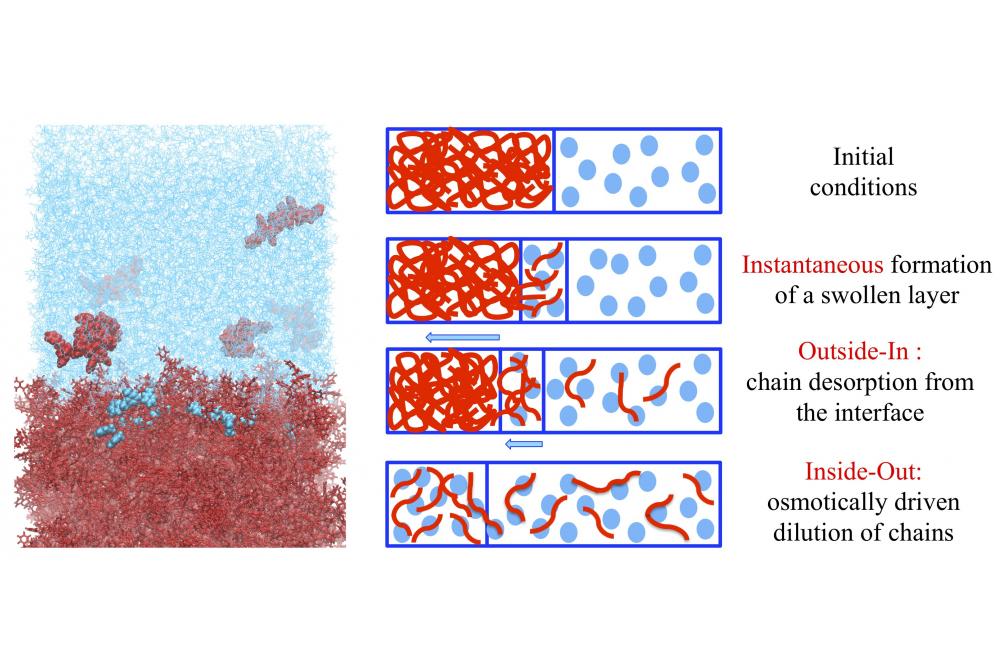How does Toluene Dissolve Low-Molecular-Weight Polystyrene?
Einleitung
Many industrial applications, like nanolithography, gas separation based on membranes, plastic recycling and drug delivery, rely for their performance on a deep knowledge of the mechanisms involved in polymer dissolution. When a solvent gets in contact with a polymer, two distinct processes occur: (I) the solvent diffuses into the polymer and (II) the polymer chains at the surface get solvated. The diffusion of the solvent and the consequent formation of a swollen layer (i.e. a layer with a lower polymer density due to the presence of the solvent) favour the detachment of the chains from the surface.
Recent studies have shown how polymer dissolution can be relevant also for wetting properties. Even if much is understood about the wetting of non-soluble substrates, much is still to be understood in the case of soluble substrates.
Due to the experimental difficulties, the penetration of solvent in thin polymer films is rarely investigated. However the molecular level details of polymer surfaces are accessible also by computer simulations.
Methoden
We investigated with atomistic simulations[1] the swelling of low-molecular-weight polystyrene induced by toluene, a solvent for polystyrene. The simulation box is shown in the left panel of Fig.1. We overcome the intrinsic difficulties of obtaining an equilibrated atomistically detailed polymer surface structure with a hierarchical simulation approach. Based on a low-resolution model[2] for polystyrene we have obtained polystyrene chain conformations and chain packing at the surface, which are independent from our initial setup[3]. With an inverse-mapping procedure[4] we then obtained the high-resolution atomic-scale picture of the polymer.
Ergebnisse
In our simulations we were able to track the real time evolution of the processes involved when a glassy polymer substrate is brought in contact with a solvent. We observed in our simulations that the polymer chains detach from the surface within a few nanoseconds, during which the solvent enters a nanometer thick surface layer. This, extremely rapid, surface swelling is probably favoured by the roughness of the disordered polymer surface. After this initial swelling, both the dilution of the chains due to the penetration of the solvent in the polymer film and the detachment of the chains from the surface take place concurrently[5]. The schematic time sequence is shown in the right panel of Fig.1.
Ausblick
An accurate quantification of the kinetics of dissolution is at the atomistic scale however not possible. In order to obtain a better statistics and to investigate the dissolution on longer polymer chains, simulations with low-resolution models are necessary. We are currently developing models[6], which keep the original relative dynamics of the atomistic system. These models will then be used to quantify the kinetics of dissolution.




